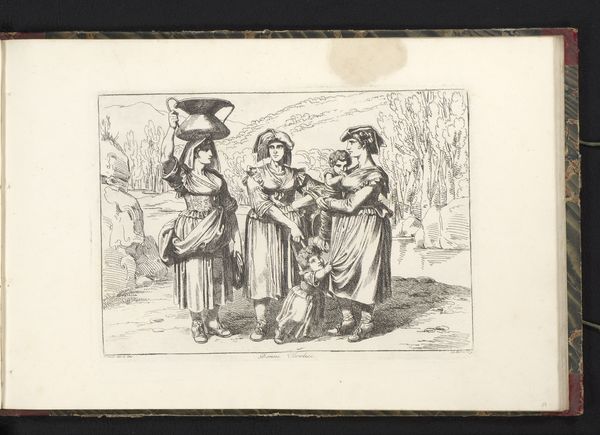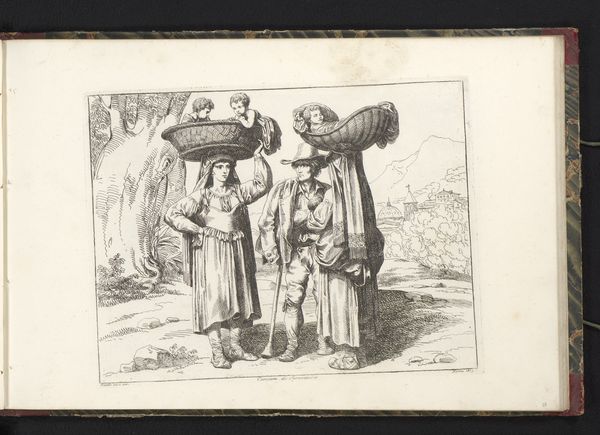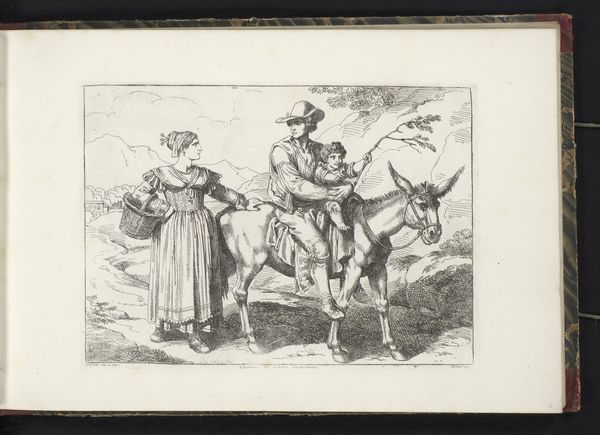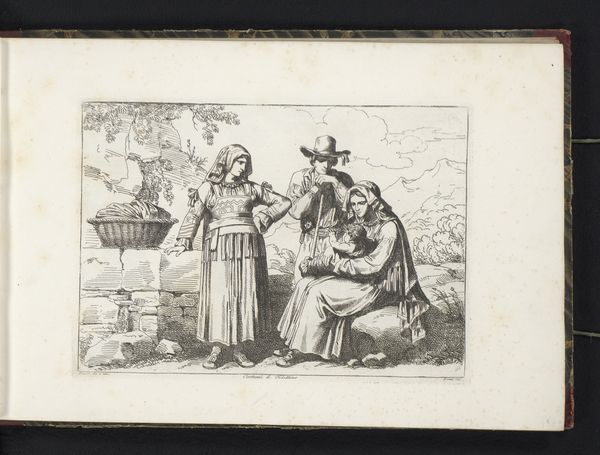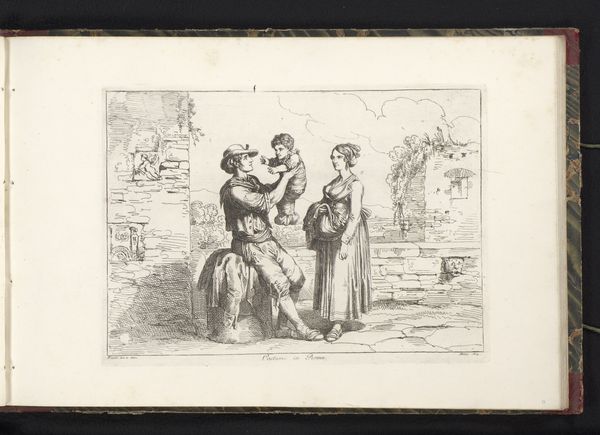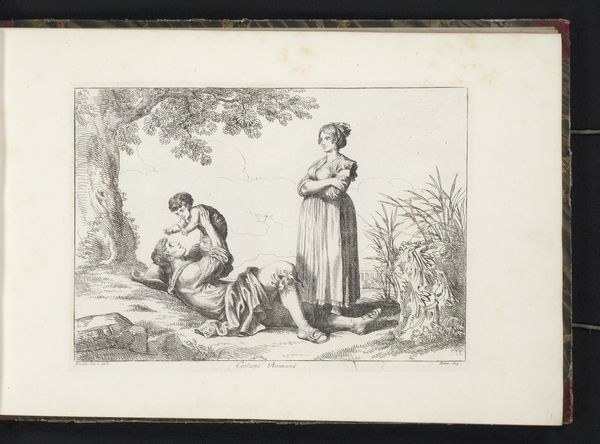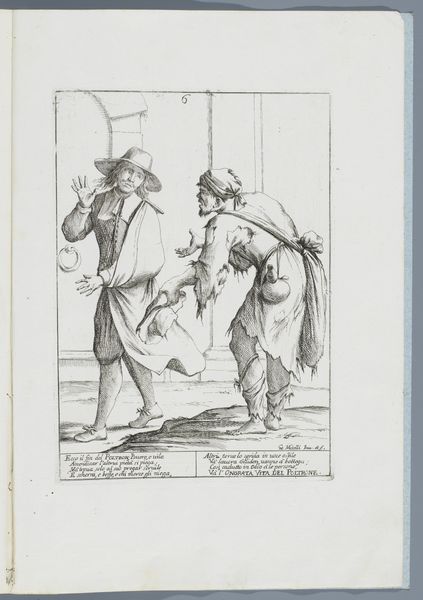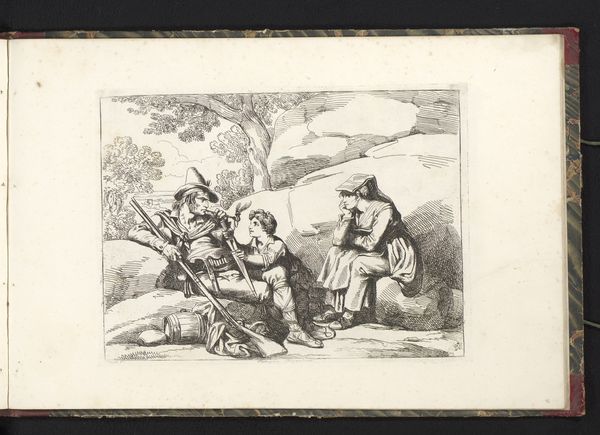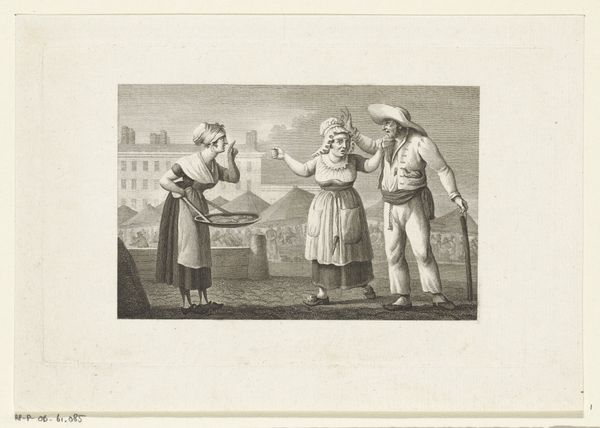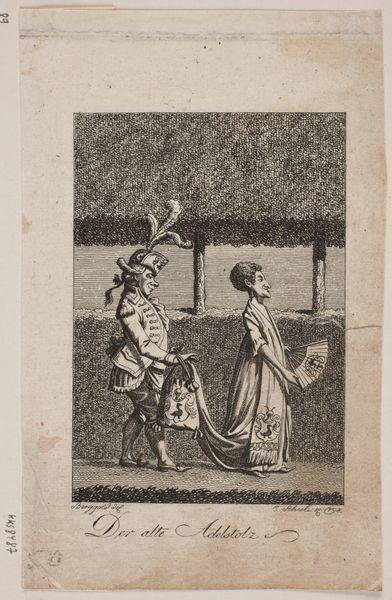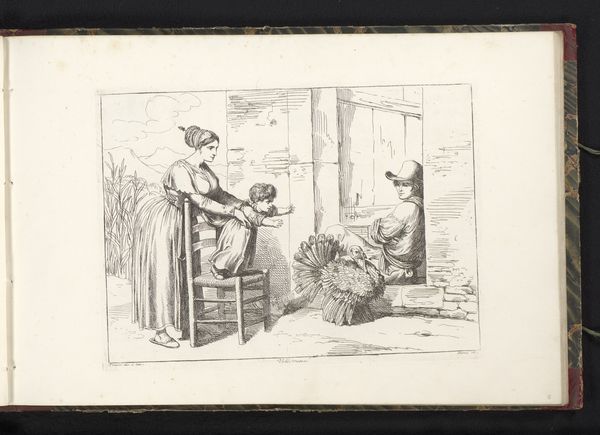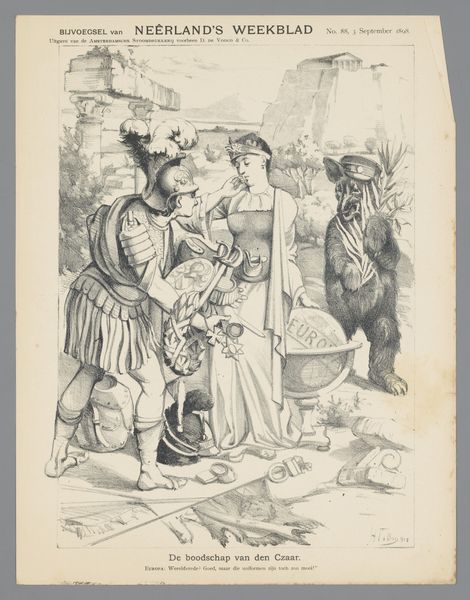
drawing, print, etching, paper, ink
#
portrait
#
drawing
#
neoclacissism
#
narrative-art
# print
#
etching
#
paper
#
ink
#
genre-painting
Dimensions: height 197 mm, width 281 mm
Copyright: Rijks Museum: Open Domain
Curator: Bartolomeo Pinelli's etching from 1819, titled "Romeins kind leert lopen" or "Roman Child Learning to Walk," offers a glimpse into 19th-century Roman life. Editor: It has an intimate, almost mundane quality about it. You see the textures of the clothing rendered simply, but with great clarity, emphasizing the weave of the fabrics and the construction of that peculiar walking frame. Curator: Exactly. That "peculiar walking frame" tells us a lot. Not all children had access to such contraptions; it hints at a certain social class. Look at the positioning of the parents too; the father's casual posture suggests his role within the domestic space, while the mother's tender support speaks to prevailing expectations about caregiving. Editor: I'm drawn to the etching technique itself. The clean lines and meticulous cross-hatching, clearly showcase a detailed reproduction through industrial printing, where you could reproduce an intimate scene. It opens a much wider reach for people who consume these kinds of artworks. Curator: Right. And consider Pinelli's larger body of work. He consistently depicted Roman customs, often focusing on the lives of ordinary people. He was attempting to create an Italian national identity, which excluded minority, displaced groups like the Sinti, Roma communities which coexisted and were indigenous to the area at the time. The focus on quotidian Italian-ness reflects and perpetuates a narrow view of culture and race. Editor: So you see the piece almost as a document of social conditioning. To see, even in these images of apparent innocence, you observe something insidious around constructions of nationhood. Curator: Yes, the composition, combined with the medium itself, works on the viewer. And, even though this etching shows a child learning to walk, perhaps the parents represent the expectations weighing heavily on their child and on the very idea of an ideal childhood in that time. It makes you consider how gender and status, as they existed back then, impacted the way people grew up and were taken care of. Editor: Seeing this, I notice so many tiny features in how people lived everyday back then, even within the same space as magnificent, imperial ruins, a juxtaposition worth pondering. Curator: It certainly provides a starting point to unpack many facets of Roman society back then.
Comments
No comments
Be the first to comment and join the conversation on the ultimate creative platform.
